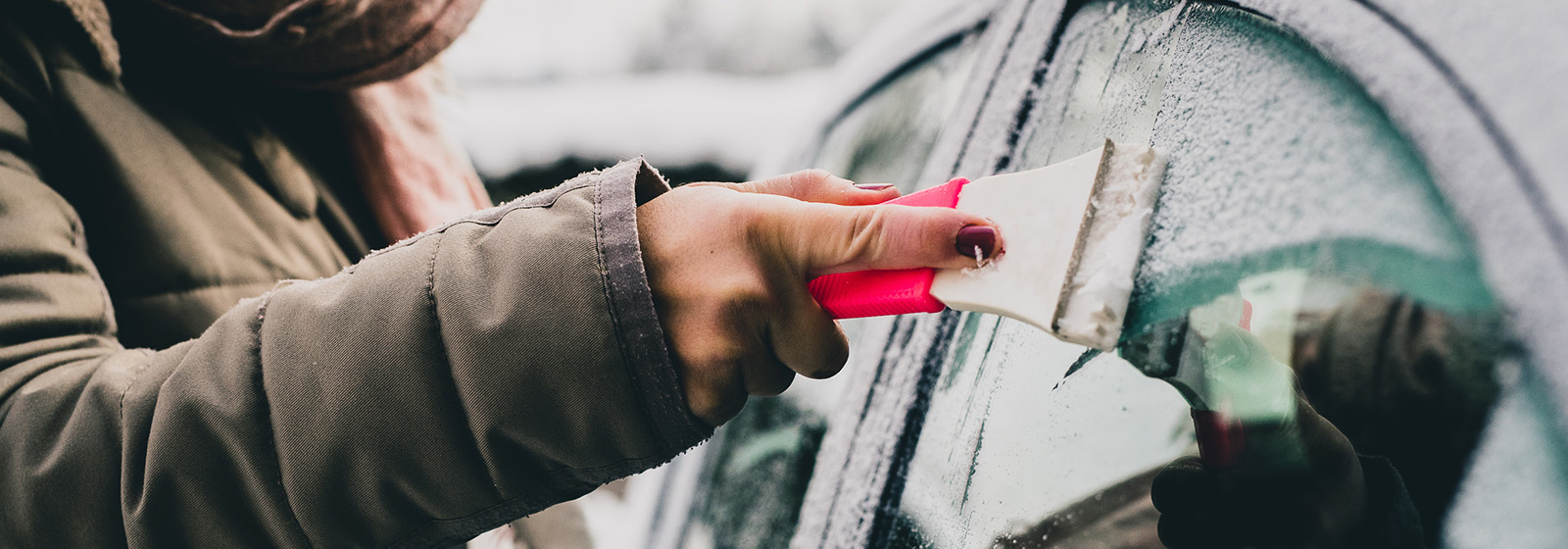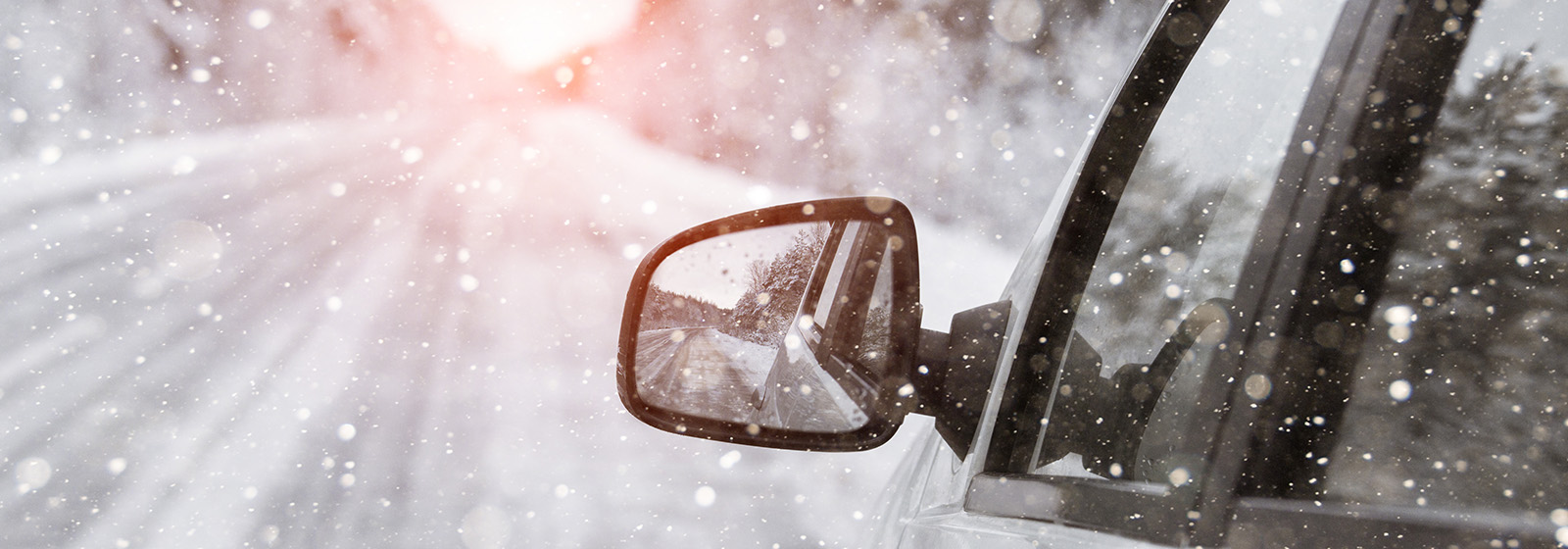How prepared are you at staying safe on the road?
Winter weather can strike at any time and preparedness is the first step to staying safe on the road. No matter what Mother Nature has in store, BCAA’s got you covered. Eligible BC Drivers can now renew their ICBC Car Insurance online without leaving the house.
But if you do need to head out, test your winter driving knowledge by answering these 7 questions.
1. In British Columbia, when is the best time to install winter tires on your car?
a. At the first sign of snow
b. When the temperature drops to zero degrees Celsius
c. At the start of fall
Answer: c
Most BC highway routes require winter tires after October 1. It’s best to beat the ‘first snowfall’ rush and get your winter tires in the fall. Book an appointment at one of BCAA’s Auto Service Centres and get a 42-point inspection with a winter tire mount and balance. This provides you with a status check on various safety aspects of your vehicle so you can feel confident when you hit the road.
2. Which of the following tires meet the legal requirements for winter driving on most highways & mountain passes throughout BC for passenger vehicles?
a. All-season
b. Mountain Snowflake
c. Mud + Snow
d. Answers b and c
Answer: d
Both the all-season Mud and Snow (M+S) tires and the 3-peaked mountain/snowflake tires meet the legal requirements for winter tire designation in BC for standard passenger vehicle or a four-wheel/all-wheel vehicle. In all cases, a winter tire must be in good condition, with a minimum tread depth of 3.5 mm (5/32”). Learn more on the Government of British Columbia website.
 |
Tires with a 3-peaked mountain and snowflake symbol offer the best traction on snow, ice, and in cold weather. They provide good winter driving performance, especially in harsh winter conditions |
 |
Tires with the M+S (Mud and Snow) symbol offer better traction than summer tires and meet the minimum legal requirement for a winter tire. But, in severe winter conditions, they are less effective than the 3-peaked mountain and snowflake tires. |
3. Which of the following should you always carry with you in your vehicle when travelling during the winter?
a. An Emergency Roadside Kit including a shovel, window scraper, and flashlight
b. Mobile phone car charger or a portable charger
c. Winter tire chains
d. Extra clothes, a blanket and supply of non-perishable food and water
e. All of the above
Answer: e
When it comes winter driving, it’s important to be prepared should you find yourself in an unexpected situation. Check out BCAA’s full list of what gear to carry in your car.

4. Okay, now you’re ready to hit the road. Which of the following steps should you always take prior to departing in winter weather?
a. Remove all ice from the roof, windows, lights and side mirrors
b. De-fog your windows and mirrors
c. Check tire pressure
d. All of the above
Answer: d
There are certain ‘musts’ you should always do before you drive, to keep both yourself and other drivers safe. Ensure proper visibility by always de-fogging all windows, and don’t forget to clear away snow and ice from the roof of your car, windows, lights and side mirrors. Left-over snow on the roof of your car can fly off while you’re driving and land on another car behind you, making it difficult for the other driver to see.
5. When driving in wet or icy conditions, what is the appropriate speed to travel in relation to the speed limit where you are travelling?
a. Drive at the speed limit
b. Drop your speed to match the road conditions
c. Keep up with traffic
Answer: b
In winter conditions, you should drop your speed to match road conditions. The posted speed limit is the maximum speed limit under ideal conditions. In winter, it is often safer to drive below the posted speed.
6. What is the recommended following distance when travelling in winter conditions?
a. At least four to six seconds between your vehicle and the one in front of you
b. Three seconds
c. Two second if your car has anti-lock brakes
Answer: a
You should always stay a minimum of four second behind the car in front of you. In wet, icy or snowy conditions, the way your car might react is unpredictable, so increasing your following distance is a safe practice.
How to measure following distance: Choose a fixed point that is even with the car in front of you (a tree, road sign or building). If you reach that fixed point before counting to four, you are driving too close.

7. What is the most important factor in enabling you to brake in a timely manner during the winter?
a. In snow, stop slowly by softly depressing the brakes to prevent engaging the ABS
b. Avoid using cruise control
c. Make certain your tires are properly inflated and have plenty of tread
d. Confirm your tires have the “mountain snowflake” symbol for best winter performance
e. All of the above
Answer: e
Taking the above precautions sets you up for safe travel during the winter. But remember, exercising caution is always the best approach!
BONUS QUESTION: What’s the best way to stay safe when road conditions are bad in your region?
Answer: Consider staying home!
Now, eligible BC Drivers can renew their ICBC car insurance online with BCAA without leaving the house. It’s easy, click here to renew.
Remember, no matter what comes your way, BCAA is only a click or call away to help keep you moving. For faster access to roadside assistance submit your request online at bcaa.com or on the BCAA Mobile App.
Not a Member yet? Become a Member today at bcaa.com, starting at less than $8 per month.
Did you find this article helpful? Learn more about the top 10 winter driving ‘snow pas’ people make and how to avoid them. And remember, bad road conditions can hit at any time and make even the shortest trips dangerous, so no matter where you’re headed, be prepared!







